Projects & Mini projects
3D Printer using Arduino Mega and Stepper Motors
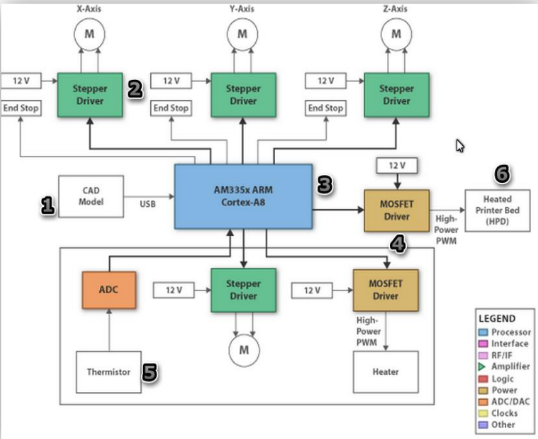
In my final year of Polytechnic, I designed and built a 3D printer from scratch. This project involved extensive work with electronics, mechanics, and software. The core of the printer is powered by an Arduino Mega, and it utilizes stepper motors for precise movement control. I also integrated Marlin firmware to manage the printing process.
Components:
- Arduino Mega: Acts as the brain of the 3D printer, controlling all the operations.
- Stepper Motors: Used for precise control of the X, Y, and Z axes movements.
- Stepper Motor Drivers: Responsible for driving the stepper motors.
- Endstops: Ensure accurate homing and positioning of the printer head.
- Hotend and Extruder: Melt and extrude the filament to form the 3D printed object.
- Heated Bed: Ensures good adhesion of the printed object and reduces warping.
- Power Supply: Provides the necessary power for all components.
Software:
- Marlin Firmware: A widely used open-source firmware for 3D printers, running on the Arduino Mega.
- Cura: Used for slicing 3D models into G-code, which is then fed into the printer.
Challenges Overcome:
- Precision and Calibration: Achieved high precision in movements and calibration of the printer head to ensure accurate prints.
- Firmware Customization: Modified the Marlin firmware to suit the specific hardware configuration of my 3D printer.
- Mechanical Assembly: Designed and assembled a stable and robust frame to minimize vibrations and ensure smooth operation.
Learning Outcomes:
- Electronics and Control Systems: Gained a deep understanding of how to control motors and other components using microcontrollers.
- Firmware and Software Integration: Learned how to customize firmware and integrate it with hardware for specific applications.
- Mechanical Design: Developed skills in designing mechanical systems that require precision and stability.
Project Impact:
This 3D printer project was a significant milestone in my education. It not only showcased my ability to integrate various engineering disciplines but also ignited my passion for innovation and problem-solving in electronics and mechanical systems. This project has laid the foundation for my future endeavors in engineering and technology.
Automatic Sanitizer using Arduino Uno and Ultrasonic Sensor
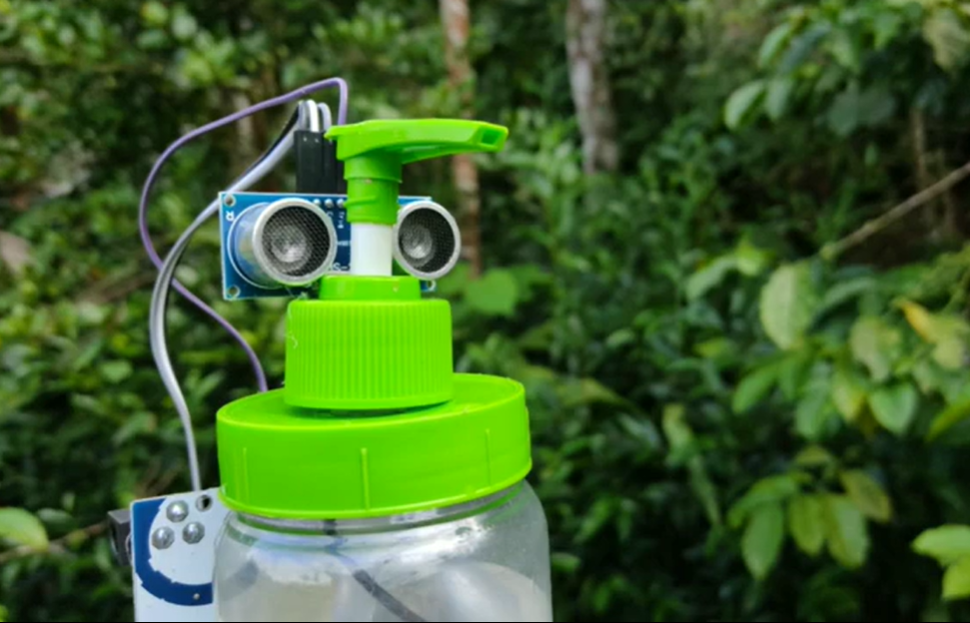
As part of my projects, I also developed an automatic sanitizer dispenser using Arduino Uno and an ultrasonic sensor. This project was aimed at providing a touchless solution for hand sanitization, which is crucial for maintaining hygiene, especially during the COVID-19 pandemic.
Components:
- Arduino Uno: The microcontroller used to control the system.
- Ultrasonic Sensor: Detects the presence of hands to trigger the sanitizer dispenser.
- Pump: Dispenses the sanitizer when triggered by the sensor.
- Power Supply: Powers the Arduino and the pump.
Operation:
The ultrasonic sensor continuously monitors for the presence of hands under the dispenser. When hands are detected, the Arduino Uno activates the pump, dispensing a pre-defined amount of sanitizer. This touchless operation minimizes the risk of cross-contamination and is ideal for public places.
Video Demonstration:
Watch the video demonstration of the automatic sanitizer dispenser here.
Learning Outcomes:
- Embedded Systems: Enhanced my understanding of embedded systems and sensor integration.
- Automation: Gained practical experience in designing and implementing automation solutions.
- Problem Solving: Improved my ability to troubleshoot and optimize electronic systems.
Project Impact:
This automatic sanitizer dispenser project was particularly relevant during the COVID-19 pandemic, providing a hygienic solution to reduce the spread of the virus. It highlighted the importance of innovation in addressing real-world problems and reinforced my commitment to using technology for the betterment of society.
Web Design Learning and Portfolio Creation

During my vacation at CUSAT, while many of my friends were engaged in internships, I dedicated my time to learning web design from the YouTube channel Brototype. I applied the skills I learned to create this portfolio, showcasing my projects and achievements.
Learning Outcomes:
- Web Design: Gained proficiency in web design principles and best practices.
- Frontend Development: Learned to use HTML, CSS, and JavaScript to build responsive and interactive web pages.
- Portfolio Creation: Applied my web design skills to create a professional portfolio to showcase my projects and skills.
Project Impact:
Creating this portfolio has provided me with a platform to display my projects and skills to potential employers and collaborators. It demonstrates my self-motivation and commitment to learning new skills independently.
Automatic Agriculture System using Arduino and Moisture Sensor
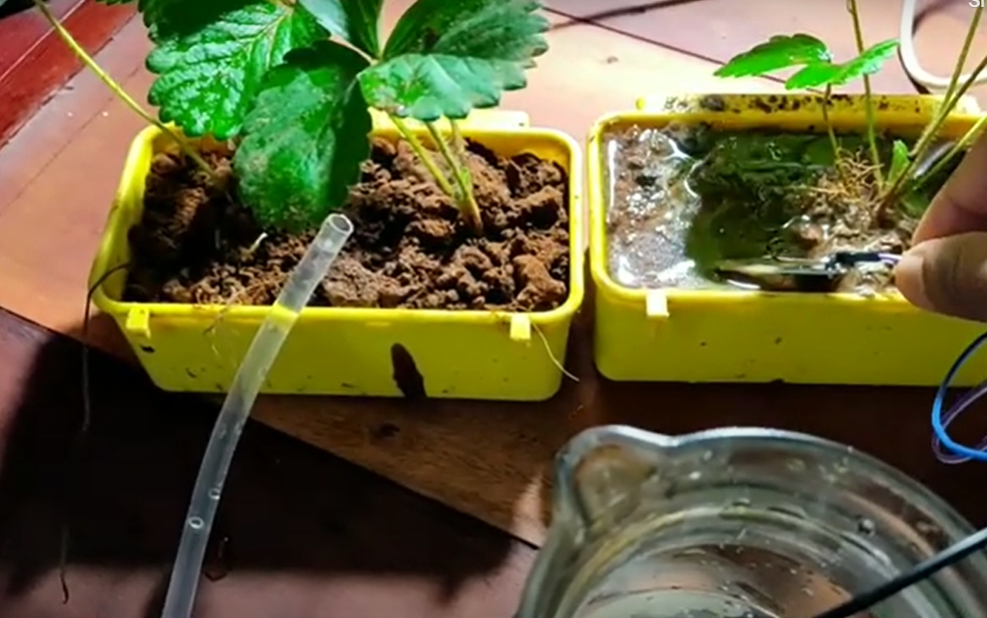
In another project, I developed an automatic agriculture system using an Arduino and a moisture sensor. This system helps in automating the irrigation process by monitoring the soil moisture levels and controlling a water pump accordingly.
Components:
- Arduino: The main microcontroller used to control the system.
- Moisture Sensor: Detects the moisture level in the soil.
- Water Pump: Activated by the Arduino to irrigate the soil when the moisture level is low.
- Power Supply: Provides power to the system.
Operation:
The moisture sensor continuously monitors the soil's moisture level. When it detects that the moisture is below a certain threshold, the Arduino activates the water pump to irrigate the soil. This ensures that the plants receive the right amount of water automatically.
Video Demonstration:
Watch the video demonstration of the automatic agriculture system here.
Learning Outcomes:
- Embedded Systems: Enhanced my knowledge of embedded systems and sensor integration.
- Automation in Agriculture: Gained practical experience in implementing automation solutions for agriculture.
- Problem Solving: Improved my ability to troubleshoot and optimize electronic systems for specific applications.
Project Impact:
This project is aimed at improving agricultural practices by automating the irrigation process, thereby ensuring optimal water usage and better crop yields. It showcases my ability to apply technology to solve real-world problems and contribute to sustainable agricultural practices.
Home Automation
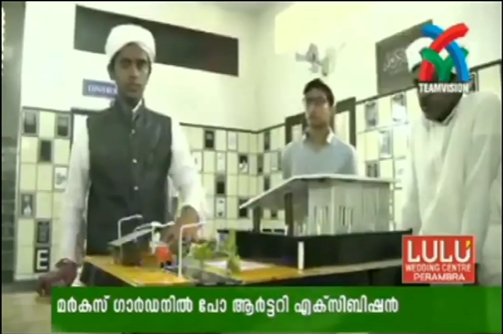
This project involves creating a home automation system using an microcontroller . The system allows users to control various appliances like lights, gates, and other devices in their home remotely via a smartphone application.
Components:
- Microcontroller: The microcontroller used to control the home automation system.
- Mobile App: A mobile application used to control the devices.
- Relays: Used to control the power to the various appliances.
- Power Supply: Powers the Microcontroller and relays.
Operation:
The Microcontroller communicates with the Mobile app. Users can control the connected devices via the app, which sends commands to the toggle the relays on or off, thus controlling the appliances.
Learning Outcomes:
- wireless communication: Gained practical experience in wireless communication systems and remote control applications.
- Home Automation: Learned how to integrate various home devices into a centralized control system.
- App Integration: Developed skills in integrating mobile applications with microcontroller-based systems.
Project Impact:
This home automation project highlights the potential of IoT in making homes smarter and more convenient to manage. It demonstrates my ability to create practical solutions that improve the quality of life through technology.
Alarm to Wild Animals

I am proud to have been awarded the grand prize at the Kerala Science Fair 2016-17, a state-level competition, for my science working model titled 'Alarm to Wild Animals.' This innovative project was designed to help farmers secure their farming areas from wild animals without causing harm to the animals. It's a testament to my dedication to science and my commitment to finding sustainable solutions for real-world problems.
Project Description:
The 'Alarm to Wild Animals' project involved creating a system that detects the presence of wild animals near farmland and emits an alarm to scare them away. The system uses sensors to detect movement and sounds an alarm when an animal is detected, thereby preventing crop damage without harming the animals.
Learning Outcomes:
- Sensor Integration: Learned how to use sensors to detect movement and trigger responses.
- Animal Behavior: Gained insights into animal behavior and how to create non-harmful deterrent systems.
- Problem Solving: Improved my ability to design solutions for real-world agricultural problems.
Project Impact:
Winning the grand prize at the Kerala Science Fair was a significant achievement. It validated my innovative approach to solving real-world problems and encouraged me to continue pursuing my passion for science and technology. This project demonstrated my commitment to finding humane and effective solutions for farmers facing challenges with wildlife.
Rover using NodeMCU with Motor Drive and Blynk App
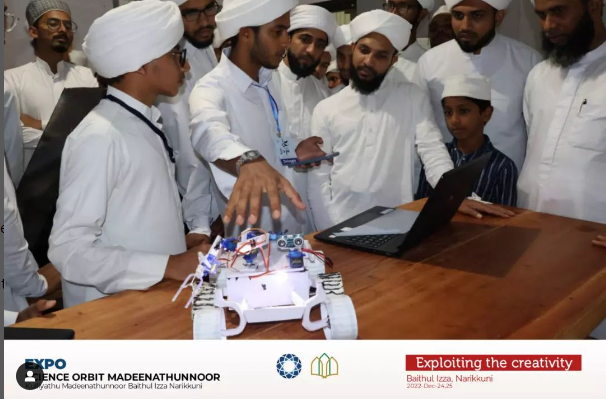
I developed a rover controlled by a NodeMCU, a motor driver, and the Blynk app. This project showcases my ability to integrate IoT technology with robotics to create a remotely controllable vehicle.
Components:
- NodeMCU: The microcontroller used to control the rover.
- Motor Driver: Controls the motors for the rover's movement.
- Blynk App: A mobile application used to control the rover remotely.
- Motors and Chassis: The physical components that make up the rover.
- Power Supply: Provides power to the NodeMCU and motors.
Operation:
The NodeMCU connects to the Blynk app via Wi-Fi, allowing users to control the rover's movements remotely. The motor driver receives commands from the NodeMCU to move the rover forward, backward, left, or right.
Learning Outcomes:
- IoT and Robotics: Enhanced my understanding of IoT and its applications in robotics.
- Remote Control Systems: Gained practical experience in designing and implementing remote control systems.
- Problem Solving: Improved my ability to troubleshoot and optimize robotic systems.
Project Impact:
This rover project demonstrates my ability to combine IoT technology with robotics to create practical and innovative solutions. It highlights my skills in integrating hardware and software to develop systems that can be controlled remotely, which is a valuable capability in the field of robotics.
Automatic Waste Box using Arduino and Ultrasonic Sensor
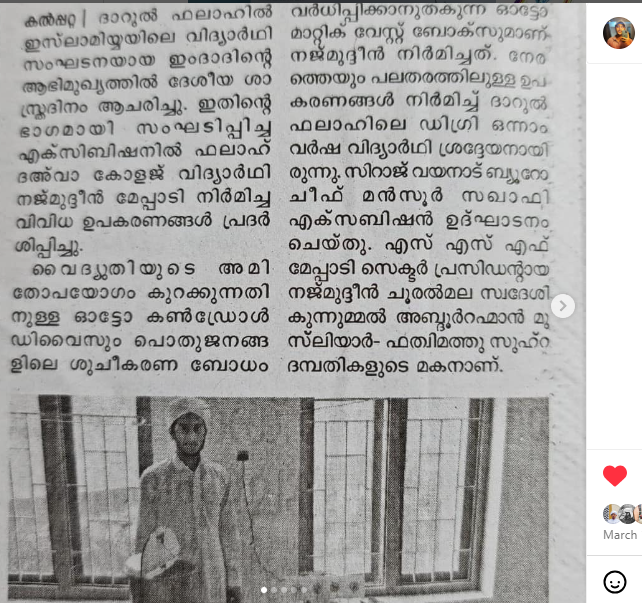
This project involves creating an automatic waste box that opens its lid when waste is detected near it. The system uses an Arduino and an ultrasonic sensor to provide a touchless solution for waste disposal.
Components:
- Arduino: The main microcontroller used to control the system.
- Ultrasonic Sensor: Detects the presence of waste near the box.
- Servo Motor: Opens and closes the lid of the waste box.
- Power Supply: Provides power to the Arduino and servo motor.
Operation:
The ultrasonic sensor detects when waste is placed near the box, triggering the Arduino to activate the servo motor, which opens the lid. After a short delay, the lid closes automatically, providing a hygienic and touchless waste disposal solution.
Learning Outcomes:
- Embedded Systems: Enhanced my knowledge of embedded systems and sensor integration.
- Automation: Learned how to implement automation solutions for everyday applications.
- Problem Solving: Improved my ability to troubleshoot and optimize electronic systems.
Project Impact:
This automatic waste box project provides a hygienic solution for waste disposal, reducing the need for physical contact and improving cleanliness. It showcases my ability to apply technology to solve practical problems and create innovative solutions for everyday use.
Water Body Accident Alarm System using Wireless Communication
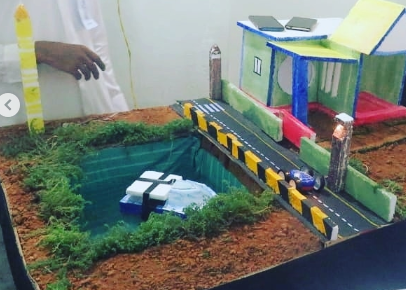
This project, created during my 10th standard, involves a water body accident alarm system that uses wireless communication to alert authorities in the event of an accident near water bodies. The system is designed to enhance safety and provide timely assistance.
Components:
- Microcontroller: The main control unit of the system.
- Wireless Transmitter and Receiver: Used for sending and receiving alert signals.
- Sensors: Detects the presence of individuals near the water body.
- Alarm System: Alerts nearby authorities or rescue teams.
- Power Supply: Powers the entire system.
Operation:
The sensors continuously monitor the area near the water body. If an accident is detected, the system sends a signal via the wireless transmitter to the receiver, which then triggers the alarm system to alert nearby authorities or rescue teams. This helps in providing timely assistance to prevent drowning or other accidents.
Learning Outcomes:
- Wireless Communication: Gained practical experience in implementing wireless communication systems.
- Safety Systems: Learned how to design and develop safety systems for real-world applications.
- Problem Solving: Improved my ability to troubleshoot and optimize electronic systems for emergency response.
Project Impact:
This project aims to enhance safety measures around water bodies by providing an effective and timely alert system in case of accidents. It showcases my ability to apply technology to solve critical safety issues and contribute to saving lives.